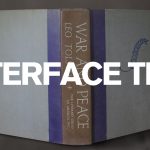Nostalgia Politics and the Fear of the New
A recent draft executive order by the Trump administration called “Making Federal Buildings Beautiful Again” favors neoclassical designs for future federally-funded buildings, setting the style inspired by Greek and Roman architecture as the established ideal, discouraging modern design. This isn’t the first time a government has sought to impose an architectural style for new buildings though. From 1933 until its fall in 1945, the Third Reich promoted a style of Nazi architecture that was, at its core, a neoclassical revival. The goal of the style was to reinforce the ideology of the Nazis with the German people throughout their everyday lives. It could be argued that the goal of the proposed law would be similar and that making all federally-funded buildings look like some variation of the White House serves to remind Americans, everywhere, that they are subjects to one rule, under one government, controlled at the federal level.
But why should a modern courthouse in Albuquerque or a prison in Juneau resemble a Greek temple built 2,500 years ago? The notion is simply absurd. Why would the government feel the need to mandate the clinging to the old and imposing a millennias-old style? Part of the answer is the politics of nostalgia and the other is the fear of the new. With the buying into the theme of Making America Great Again, America has fallen for a false claim that to make this country great, we must go backward. By simply returning to an idealized time in our history, we will be better off but that’s simply not true. Our waterways used to be dumping grounds of toxic chemicals before the EPS stepped in. Our air was choked with smog and acid rain. People of color were no more than property and could be lynched without repercussions. And women did not have the right to vote. These are just some chapters of our history that we must accept when we say that our past was great. But the politics of nostalgia requires followers to ignore the bad and only remember the good. Greek and Roman architecture is remembered as great even as we ignore those great societies collapsed long ago.
The other reason that the administration in particular, and conservatives in general, would want to promote neoclassical architecture is a fear of the new. New ideas in any society are dangerous to those in power. Long established hierarchies can be called into question when one begins to think for him or herself. Modern architecture and art require new thinking and new ideas and these ideas can lead to a reconsideration of the structure of our entire society. Nazi Germany sought to impose its will on the people by building large structures and entire cities as monuments to the party. Modern architecture, at its best, serves people. As such, empowering people is a terrifying idea for those who hold power and not at all surprising that they would shun such ideas.
It is true that not every modern building is a work of art. There are constraints on modern buildings—budgets, zoning, usage requirements, accessibility issues—that would never have been considered by the Greeks or Romans. While it is never the intent of an architect to create something that is less than Pritzker-prize winning, as is often the case, project constraints don’t allow for every building to be a work of art. At the same time, not every building from antiquity was great and the ones that stand today as examples are the ones that people preserved precisely because they were special. Plus, modern building techniques allow for forms the ancients could have only dreamed of and we have the opportunity to build innovative modern buildings that, when looked back at from the future, will be considered modern classics.
Look at the work of Zaha Hadid, Frank Gehry, Renzo Piano, Santiago Calatrava, and others. Freed of the constraints of having to adhere to a particular style, coupled with their knowledge and use of modern materials and construction techniques, they’ve created some of the most beautiful and innovative buildings that stand today. Anyone who has walked around and through their works will begin to understand that, at its best, architecture isn’t about style, it’s about form, function, space, materials, light, texture, sound, and many other things these brilliant architects take into account throughout a project.
Instead of forcing modern federally-funded buildings to look like little Greek temples, if the government was truly interested in making federal buildings beautiful, they’d better fund the projects, mandate hiring the best architects, and, in turn, fund art and architecture programs across the country to raise the bar of quality for all of the arts.
But clearly, the draft executive order isn’t about raising the bar for the arts, it’s about reminding Americans, everyone, about who’s in control.




